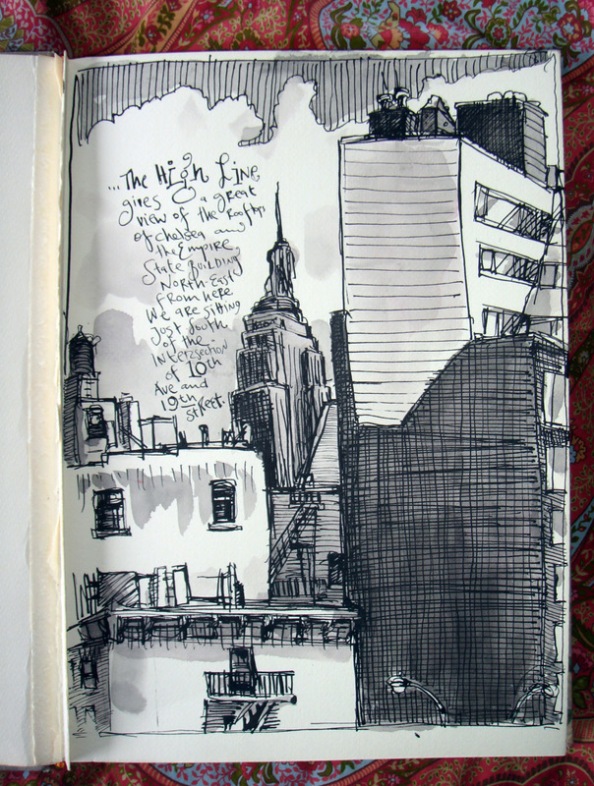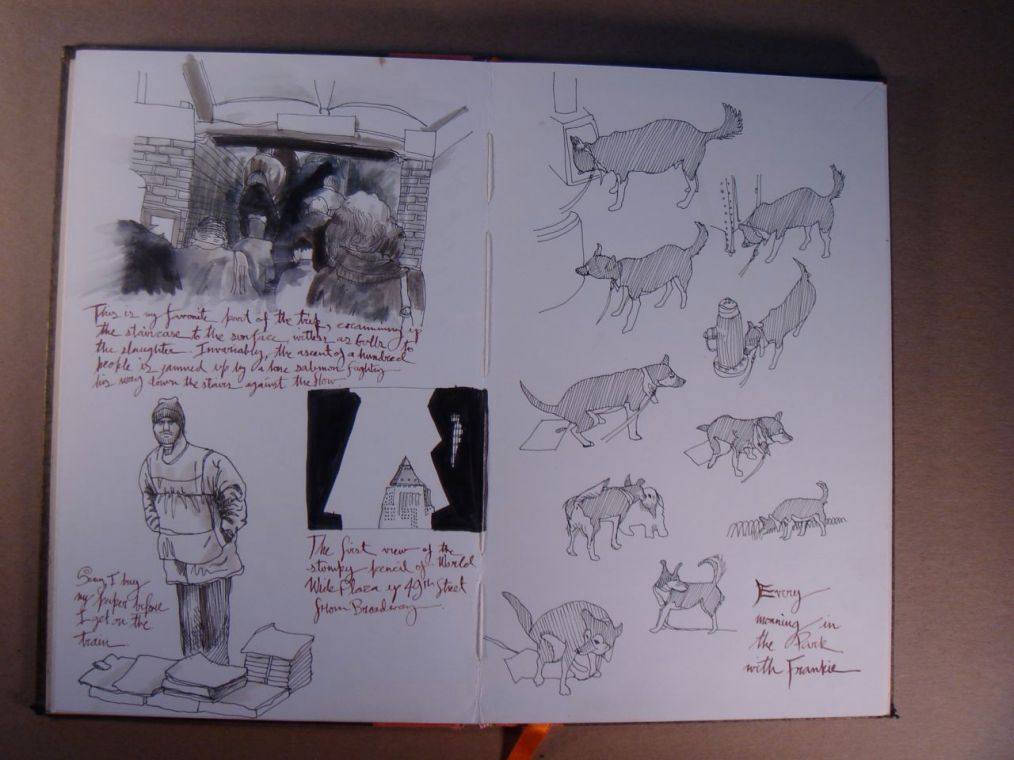Principle 1- Draw by hand.
‘Think on the page’ – Da Vinci
An important part of my R.V.J is how ideas are communicated. Drawing onto the page engages the thoughts from your head and forms the physical connection between mind, eye and hand.
Drawing onto the page is almost thinking out loud, getting them out of your head onto paper creates a dialogue and allows you to see what will work, how it connects, and helps you to realise your intentions.
It doesn’t matter if the images are pretty or not, they can be childish and crude, the most important thing is that you loose self consciousness and draw only for ideas, not art.
Danny Gregory
I looked at Gregory’s landscape journals, he explores skylines, architecture and building through sketches, using dip pens and only shading certain areas which brings the eyes attention to them and creates light and shade to define the image.
He has also made brief notes which help reflect on the time and moment and self feelings of the drawing which couldn’t be spoken as well through images.
Gregory’s earlier journals, here you can see how he is exploring the dogs shape and form, as well as other quick sketches and ideas, with minimal writing.
Explore different mark making and textures, look around you and see everything as a material and apply this- use things you’ve never used before. Draw with sticks, cardboard, experiment!
let things go wrong!
Only from mistakes can you learn, and change and grow, accidents can develop into something that works.
another way drawing out helps is visualising films and animations through storyboard. Drawing is the language that brings the script to life before being adapted to camera.
Principle 2
The brain is made up of 2 halves- the left hemisphere and right hemisphere. The right acts and thinks more like a child in that it is more creative and wants to play and explore. It is sensitive, childlike, innocent, and curious.
This means that the right side of the brain is engaged when drawing on the page and experimenting with new ideas!
 For example in this drawing page my Henry Moore shows his creative right side of his brain as he pushes the pencil around in different mark making to create his sculpture.
For example in this drawing page my Henry Moore shows his creative right side of his brain as he pushes the pencil around in different mark making to create his sculpture.
The left hemisphere is more like an accountant as it has more analytical, thinking and grids.
Analysis <——> Experiment
One needs to feed of the other, through knowing which side of your brain you are using you can engage this more. One side is spontaneity then the other focus. You can draw and create then switch to your left of your brain to briery annotate, connect your ideas and reflect over what you have done.




